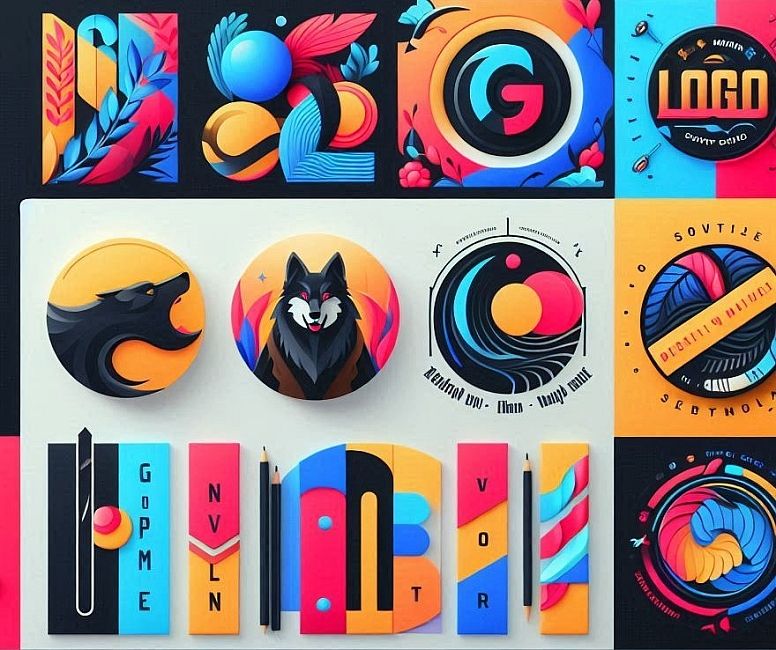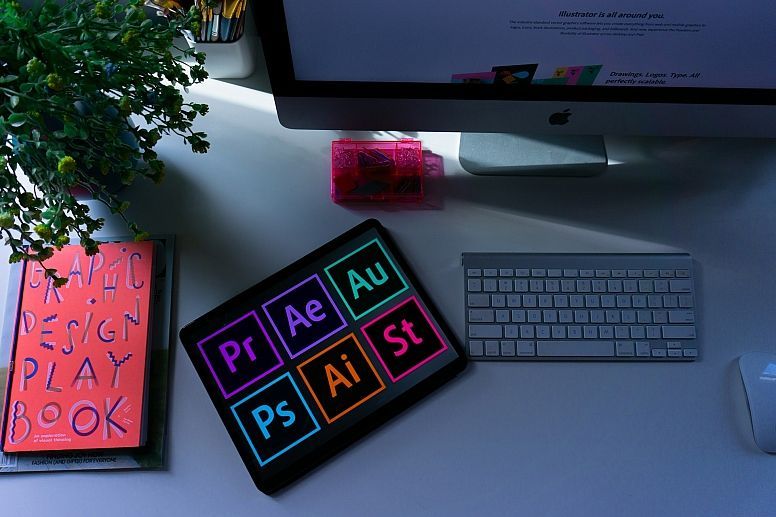
Becoming a Graphic Designer: A Creative Journey
In our visually-driven world, graphic designers play a crucial role in shaping how we perceive information, products, and brands. If you have a passion for creativity, a keen eye for aesthetics, and a love for problem-solving, a career in graphic design might be your calling.
We aim to guide you through the steps to becoming a graphic designer, from honing your skills to launching your career in this dynamic and rewarding field.
Step 1: Develop Your Creative Skills
Graphic design is all about creativity and visual communication. To kickstart your journey, it's essential to nurture your creative abilities. Here's how:
Learn the Basics of Art: Start with the fundamentals of design, such as colour theory, typography, composition, and perspective. Take art classes or study art theory books to understand the principles that underpin graphic design.
Practice Regularly: Like any skill, graphic design improves with practice. Experiment with various design projects, from posters to social media graphics. The more you create, the more you'll refine your skills.
Software Proficiency: Familiarize yourself with industry-standard design software like Adobe Creative Suite (Photoshop, Illustrator, InDesign). There are also free alternatives like GIMP and Inkscape if you're on a budget.
Stay Inspired: Follow design blogs, browse through design magazines, and attend art exhibitions to stay inspired. Exposing yourself to different styles and trends will broaden your design vocabulary.
Step 2: Pursue Formal Education
While formal education isn't mandatory for a career in graphic design, it can provide a solid foundation and help you build connections in the industry. Consider these options:
Bachelor's Degree: Many graphic designers hold a bachelor's degree in graphic design or a related field like visual communication. These programs typically cover design theory, software skills, and portfolio development.
Online Courses and Tutorials: If a full degree isn't feasible, numerous online courses and tutorials can help you learn graphic design at your own pace. Platforms like Coursera, Udemy, and LinkedIn Learning offer a wide range of options.
There are countless design tutorials available online, covering a wide range of topics and software such as logo design, web design, digital art, and UI/UX design.
Workshops and Seminars: Attend workshops and seminars hosted by experienced designers and organizations. These events provide hands-on experience and networking opportunities.
Step 3: Build Your Portfolio

Your portfolio is your calling card in the graphic design world. It showcases your skills, style, and versatility. Here's how to create an impressive portfolio:
Diverse Projects: Include a variety of design projects that demonstrate your ability to work on different media and styles. This could include logos, posters, web design, branding materials, and more.
Quality Over Quantity: Focus on showcasing your best work rather than overwhelming potential clients or employers with a large volume of mediocre designs.
Keep it Updated: Regularly update your portfolio with your latest and best projects. A current portfolio reflects your growth as a designer.
Online Presence: Create a professional website to showcase your portfolio. Personal portfolio platforms like Behance and Dribbble can also be used to gain exposure within the design community.
Step 4: Gain Practical Experience
To become a successful graphic designer, you'll need practical experience to apply your skills in real-world situations. Here's how to gain experience:
Internships: Seek internships at design agencies, advertising firms, or in-house design departments. These opportunities offer valuable hands-on experience and networking.
Freelancing: Start freelancing to build your client list and portfolio. Freelance work allows you to work on a variety of projects and develop your business acumen.
Collaborate: Collaborate with other professionals, such as photographers, writers, and developers, to understand how design fits into larger projects.
Step 5: Launch Your Career
Once you have honed your skills and gained experience, it's time to launch your graphic design career:
Network: Attend industry events, join design associations, and connect with professionals on LinkedIn. Building a strong professional network can lead to job opportunities and collaborations.
Job Search: Look for graphic design positions that align with your interests and skills. Common job titles include Graphic Designer, Art Director, UI/UX Designer, and more.
Freelance or Entrepreneurship: If you prefer independence, consider starting your own design business or working as a freelance designer. This path allows for greater creative control and flexibility.
What is the top design software?

There are several top design software programs widely used by professionals in various design disciplines. Here are some of the top design software programs that have proven to be popular over time:
Adobe Creative Cloud (CC) Suite:
- Adobe Photoshop: For photo editing and manipulation.
- Adobe Illustrator: For vector graphics and illustrations.
- Adobe InDesign: Primarily used for page layout and desktop publishing.
- Adobe XD: Specialized in user experience (UX) and user interface (UI) design.
- Adobe After Effects: For motion graphics and visual effects.
- Adobe Premiere Pro: Video editing and production.
- Adobe Lightroom: Photo editing and organization for photographers.
- Adobe Spark: A simplified tool for creating graphics, web pages, and videos.
CorelDRAW: A vector graphics editor known for its versatility in graphic design, illustration, and page layout.
Sketch: A popular vector-based design tool primarily used for UI and UX design on macOS.
Figma: A web-based design tool for collaborative UI/UX design, allowing real-time collaboration among team members.
Affinity Designer: A cost-effective alternative to Adobe Illustrator, known for its powerful vector design capabilities.
Affinity Photo: A photo editing software similar to Adobe Photoshop, also offered by Serif as part of the Affinity suite.
Inkscape: An open-source vector graphics editor suitable for creating vector art, illustrations, and unique logos.
GIMP (GNU Image Manipulation Program): An open-source raster graphics editor that serves as an alternative to Adobe Photoshop.
Canva: An online design platform with a user-friendly interface, offering templates for a wide range of design projects.
Procreate: An iPad app popular among digital artists and illustrators for creating stunning artwork.
AutoCAD: Industry-standard software for 2D and 3D computer-aided design (CAD) and drafting, commonly used in architecture and engineering.
Blender: An open-source 3D computer graphics software used for creating 3D animations, modelling, and rendering.
Cinema 4D: A 3D modelling, animation, and rendering software often used in motion graphics and visual effects.
ZBrush: A digital sculpting tool used by artists and designers for creating detailed 3D models and characters.
Adobe Dimension: A software for creating 3D mockups, product packaging, and realistic 3D scenes.
Remember that the choice of design software depends on your specific needs and preferences. Graphic designers, UI/UX designers, illustrators, and 3D artists may use different tools based on their projects and workflows.
It's a good idea to explore and experiment with various software options to find the one that best suits your design goals and style. Additionally, staying updated with the latest software developments is essential to remain competitive in the design industry.
Becoming a graphic designer is a journey that combines creativity, education, practice, and networking. It's a profession that offers endless opportunities for self-expression and problem-solving.
By developing your skills, building a strong portfolio, and gaining practical experience, you can turn your passion for design into a fulfilling and rewarding career in the world of graphic design.














